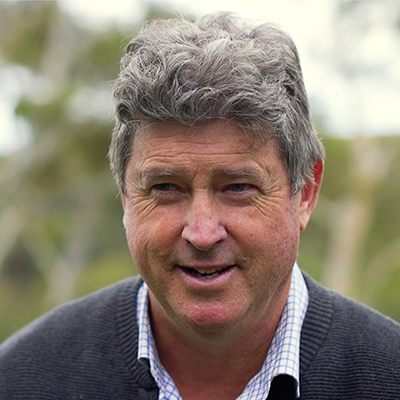A very big flood
The fan-shaped accumulation of sand occurred as a result of the water from Sandhills merging with Mulloon Creek, causing it to disperse and decelerate. This reduced flow energy facilitated the deposition of sand. The presence of vegetation at the confluence also played a significant role in slowing down the creek's flow. In contrast, areas upstream in Sandhills without instream structures experienced intense flow, resulting in the uprooting of numerous willow trees.
Boxing Day 2023 saw possibly the largest and most intense rainfall event since European settlement open up over Mulloon Creek Natural Farms’ Duralla property and the surrounding Sandhills Creek catchment upstream. Within the first hour alone 59mm had fallen, with a total of 136.6mm falling over a four-hour period. We know this because we have a climate station installed at Duralla that updates every minute.
This event well exceeded a ‘1 in 100-year’ flood event.
Channel capacity at the top Sandhills Creek crossing on Duralla is 216m3 per second. A 1 in 100-year event, which we call a 1% Annual Exceedance Probability (AEP) event, (i.e. there is a 1% chance that in any given year a flood will reach such a level) is 208m3 per second.
Given there was debris at least halfway up the fence on the top terrace at the Sandhills Creek crossing, the peak volume of water would have been much greater than double the channel capacity at this point, because water was also spreading across the floodplain. This means that the flood would probably have exceeded anything Sandhills Creek has seen in the past 200 years.
“It’s ironic that we started this work primarily for drought resilience. The last four years have demonstrated that our work is equally as important for flood buffering as well.”
Peter Hazell, Principle Landscape Designer, Mulloon Institute
At present, there are no instream structures installed along Sandhills Creek. As such the flow was high energy and there was substantial damage to the creek and nearby infrastructure.
Mulloon Creek flooded as well. Though it was relatively smaller, it still broke the banks of the creek and spilt onto the floodplain. However, the energy of this flood was dissipated due to the installation of over 50 streambed structures into Mulloon Creek, and the surrounding riparian vegetation becoming well established. Fine material was deposited on the floodplain, no fences along Mulloon were lost, and overall, the system benefited. The event once again showcased the effectiveness of existing instream structures in distributing and filtering the flow, and in preventing erosion and incision of the creek. This is the 18th event that has broken the banks at Mulloon Creek since the beginning of 2020.
The big cleanup continues.
Sandhills solar panel washed away.
Sandhills monitoring equipment damaged
Sandhills Creek crossing showing the extent of damage to trees that have been ripped up during the intense flooding.





